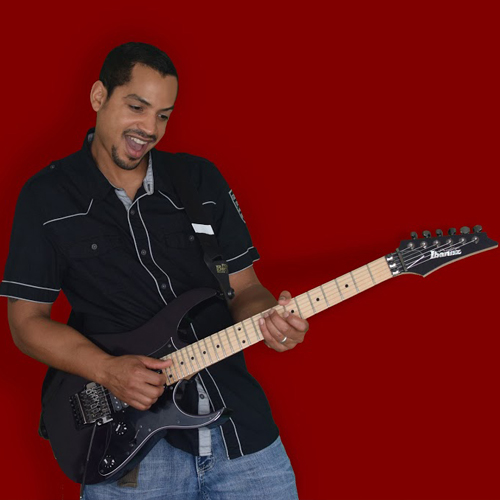Excellent guitar playing starts with a great guitar tone! On the other hand, nothing will kill all your hard work in the practice room like a nasty tone. For that reason, I’m not going to sugarcoat it. If you’re tone stinks, everything you play will stink too. That’s why I put together my top three tips to help you or your child get a great tone on the guitar right at any point in the guitar learning journey.
A Great Guitar Tone Begins with a Mindset
Believe it or not, 95% of your tone comes from your fingers. The other 5% comes from your gear. This idea may be counterintuitive if you’re starting because you have yet to develop your touch on the guitar, but your tone will begin to take shape as you log in the practice hours. That’s a simple truth, but many young guitarists get caught in an endless search for the perfect guitar tone. In translation, these people spend tens of thousands of dollars and countless hours searching for the right piece of gear to produce the perfect tone when their most significant point of leverage is in their practice room.
Invest In The Best Guitar Gear You Can Comfortably Afford for a Great Guitar Tone
I realize it may sound like a contradiction to my first tip, but 95% of your tone comes from your gear in the beginning. That’s because you just started playing, and you haven’t logged in the hundreds or even thousands of hours it takes to develop a great tone in your hands yet. Please don’t fret about it. That will come with time and hard work. In the meantime, you or your child can still sound good with the best gear you can comfortably afford and great gear begins with a great amp. The Yamaha THR-10 and the Roland Micro Cube GX are excellent budget amps, and I’ve heard six-year-olds who sounded incredible on them!
Focus on Your Finger Placement for a Great Guitar Tone
When it comes to getting a great tone on the guitar, finger placement is a big deal because the best notes happen just left of the fret wire. That’s true for single-note lines, and it’s true for chords as well. For that reason, why you want to focus on placing your fingers as close to the fret wire as possible without touching it. In addition, listen closely to the notes you play. If you experience any buzzing, your finger placement is most likely in the wrong place on the fret. Consequently, you should adjust your finger position and repeat the process until you produce a clear tone.
FREE Introductory Guitar Course for Kids
Sign up for Rock Dojo’s newsletter to receive your free introductory guitar course for kids. By the end of the course, your child will have a solid foundation for playing rock guitar. It’s free, and you can cancel at any time. Sign up today!



